 Mysteries
Mysteries  Mysteries
Mysteries  History
History 10 Surprising Stories About the Texas Rangers
 Humans
Humans 10 Philosophers Who Were Driven Mad by Their Own Theories
 Miscellaneous
Miscellaneous 10 Video-Game-Worthy Weapons and Armors from History
 Weird Stuff
Weird Stuff 10 Psychics Who Accurately Predicted Wartime Events
 The Arts
The Arts 10 Pieces of Art Inspired by a Broken Heart
 Health
Health 10 Science Fiction-Sounding New Medical Treatments
 History
History 10 Surprising Facts About the Father of Submarine Warfare
 Space
Space Ten Astonishing New Insights into Alien Worlds
 Weird Stuff
Weird Stuff 10 Bizarre Summer Solstice Rituals Still Practiced Today
 Mysteries
Mysteries Top 10 Haunting Facts About the Ghost Ship MV Alta
 History
History 10 Surprising Stories About the Texas Rangers
 Humans
Humans 10 Philosophers Who Were Driven Mad by Their Own Theories
Who's Behind Listverse?

Jamie Frater
Head Editor
Jamie founded Listverse due to an insatiable desire to share fascinating, obscure, and bizarre facts. He has been a guest speaker on numerous national radio and television stations and is a five time published author.
More About Us Miscellaneous
Miscellaneous 10 Video-Game-Worthy Weapons and Armors from History
 Weird Stuff
Weird Stuff 10 Psychics Who Accurately Predicted Wartime Events
 The Arts
The Arts 10 Pieces of Art Inspired by a Broken Heart
 Health
Health 10 Science Fiction-Sounding New Medical Treatments
 History
History 10 Surprising Facts About the Father of Submarine Warfare
 Space
Space Ten Astonishing New Insights into Alien Worlds
 Weird Stuff
Weird Stuff 10 Bizarre Summer Solstice Rituals Still Practiced Today
Top 10 Fatal Attacks From Fresh Fruit
Comedy superstars Monty Python’s famous 1969 sketch brought to our attention the very realistic dangers posed by a would-be attacker armed with a piece of fresh fruit. And while their self-defence class centered on the banana’s use as a weapon, fresh fruit’s fatal potential is no laughing matter. Whether it be from choking, poisoning, a trip hazard or a falling object – fresh fruit can kill. Here are ten cautionary tales.
Top 10 Fruits That Have Drastically Changed
10 Grapes of Wrath

Round, ripe and delicious? Don’t let their small size diminish their danger – grapes are an often-overlooked contender to kill. In 2017, a five year old boy choked to death at an after-school club after a grape had become lodged in his airway. Paramedics attempted to remove the offending object with a special pair of forceps, but it was too late. Between 1999 and 2013 in the USA, 2103 childhood deaths occurred from ‘foreign body airway obstructions’ – with grapes ranking third after only hot dogs and boiled sweets.
The British Medical Journal describes why grapes are particularly well-suited to suffocate us, especially in younger children who may not chew their food sufficiently. Soft objects are less likely to be easily expelled via the Heimlich maneuver; instead, remaining wedged in the airway – assisted by their spherical shape. Whilst pre-slicing grapes is a disaster-mitigating move, it’s no guarantee of safety. As far back as 405 BC, ancient Greek playwriter Sophocles is reported to have choked on a grape seed in his cup of wine.
9 An Apple A Day…

… keeps the Doctor away, the old adage goes; but sadly, healthy intentions can have catastrophic consequences. In May 2016, a 22 month old toddler in New Zealand was left permanently paralyzed after suffocating on a slice of apple, prompting cardiac arrest and leaving him with severe motor disabilities. A near-miss, but a tragic warning nonetheless.
Choking aside, apple seeds could potentially pose poison risks. Containing a compound called amygdalin, when the seed is crushed or chewed, this amygdalin produces hydrogen cyanide – lethal in high enough doses, around 50-300mg for an adult. A single apple seed is estimated to contain 0.6mg of cyanide – meaning you’d need to consume between 83 and 500 apple seeds to develop acute poisoning— so while munching on one Golden Delicious won’t kill you, excessive indulgence could.
8 Going Bananas
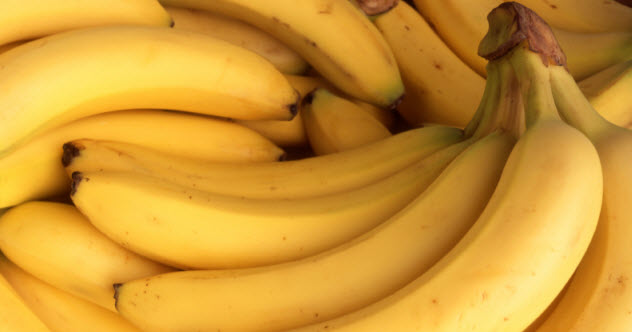
Another popular misconception is that eating six or seven bananas in a row could kill you via potassium poisoning. This simply isn’t true; scientists estimate a lethal dose would accumulate from ingesting over 400 a day – before which being sick would almost surely remove the offending article from your system. And whilst bananas are also radioactive, it would take roughly seven years of eating 274 a day to develop acute symptoms.
Yet perhaps bananas’ deadliest danger is their skin: the butt of many a slapstick sketch, slipping on a banana was no joke for the young boy who slipped at an intersection of Newark, New Jersey on July 2, 1920. Although his cause of death was noted as the truck who ran him over, the banana’s contribution is not to be overlooked. More recently, in 2013, a man slipped on a banana peel and into the path of an oncoming Staten Island subway train. Scared to go out and about with this slippery yellow assassin on the loose? There is some hope: 99% of all exported bananas are a hardy variety called the Cavendish, but highly susceptible to a strain of disease which could one day wipe them out.
7 Not Very A-Peeling
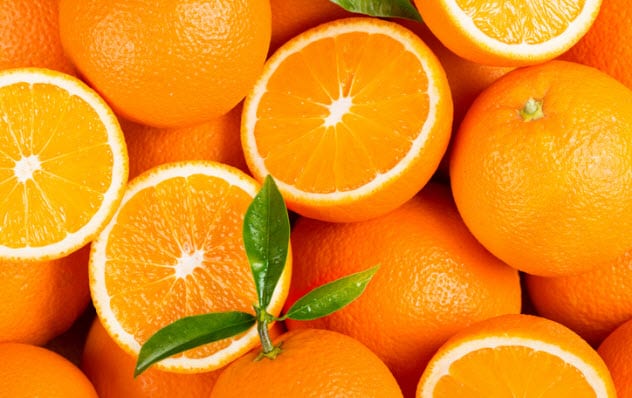
If fatally slipping on fruit peel seems stupid to some, surely an experienced stuntsperson ought to know better, right? Unfortunately, even the most daredevil amongst us are not immune from fresh fruits’ upsetting influence. In 1911, English showman Bobby Leach became the second person to successfully survive a trip over Niagara Falls in a barrel. Despite a few scrapes and knocks, he was altogether unharmed, celebrating with a cigar. Ironic, then, that his ultimate demise – fifteen years later – came at the hands of a humble orange peel. After slipping over on the street, Leach’s broken leg became infected, and without the availability of antibiotics he died during surgery.
Perhaps Whole Foods had the right idea when, in 2016, they marketed pre-peeled oranges in plastic packaging. Despite environmental backlash on social media (a criticism resulting in the product being pulled), maybe the grocery store were simply trying to save customers from the perils of the peel.
6 Presidential Peril
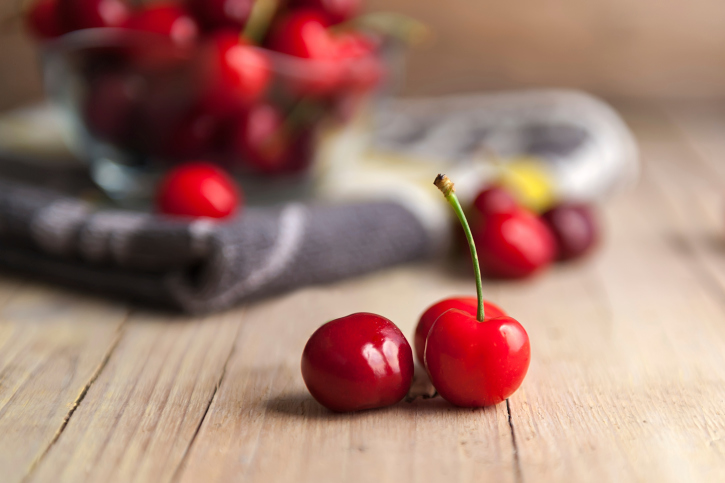
It’s not just daredevils who have died at the hands of fresh fruit; in 1850 the 12th US President – Zachory Taylor – met a sticky end after a brush with some cherries. Recently elected, the President was celebrating in the grounds of what would become the Washington Monument. Five days later, aged just 65, he was dead – having survived a recent war with Mexico, a theory persists he met his maker through his selection of tasty picnic treats.
Doctors decreed that President Taylor died from ‘cholera mobus’—prevalent in an era of poor sewage and sanitation—a bacteria present in the water he drank directly as well as the water used to wash fruit. Urban myths at the time attributed the onset of stomach cramps to consuming a large amount of fruit and milk at the same time—in particular a vast volume of cherries.
5 Melancholy Melon

Fatal fruit-based bacteria attacks are by no means limited to Presidents. Listeria is most commonly associated with unpasteurized dairy products and chilled pre-packaged sandwiches, but sadly, fruit-related incidents have also occurred. In 2011, the CDC reported fifteen people who died after consuming contaminated cantaloupe melon, along with an additional 72 illnesses: making it the deadliest food-borne outbreak of illness in America since 1998.
In 2018, four people in New South Wales died from listeria contracted from contaminated rockmelons, prompting the fruit to be pulled from supermarket shelves. Pregnancy increases your chances of contracting listeria tenfold, so if you’re expecting, perhaps give the melons a miss.
4 Lethal Lychees
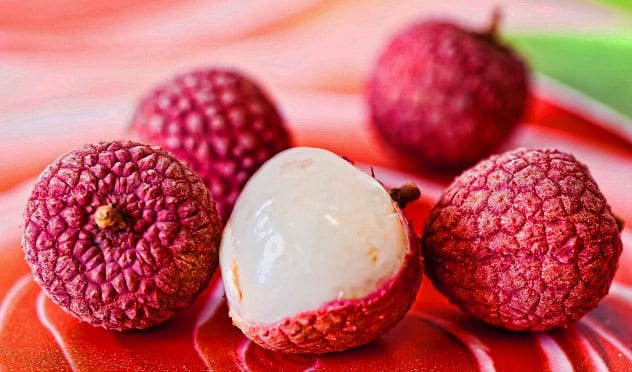
So what if something isn’t toxic outright, and isn’t carrying a bacteria-borne infection – safe, right? Not necessarily. In 2017, research published in the Lancet pointed the finger at lychees for poisoning over 100 children a year in northern India. For those willing to prise open a spiky outer shell, lychee fruit is an exotic and tasty treat. Yet unripe examples contain a chemical called hypoglicin, a toxin that can cause extremely low blood sugar – causing a change in brain functioning, leading to loss of consciousness and death.
To children already undernourished and underfed, snacking on lychees proved even more potent. Half of the victims admitted to hospital in Muzaffarpur, northern India, never recovered.
3 Enduring a Durian attack
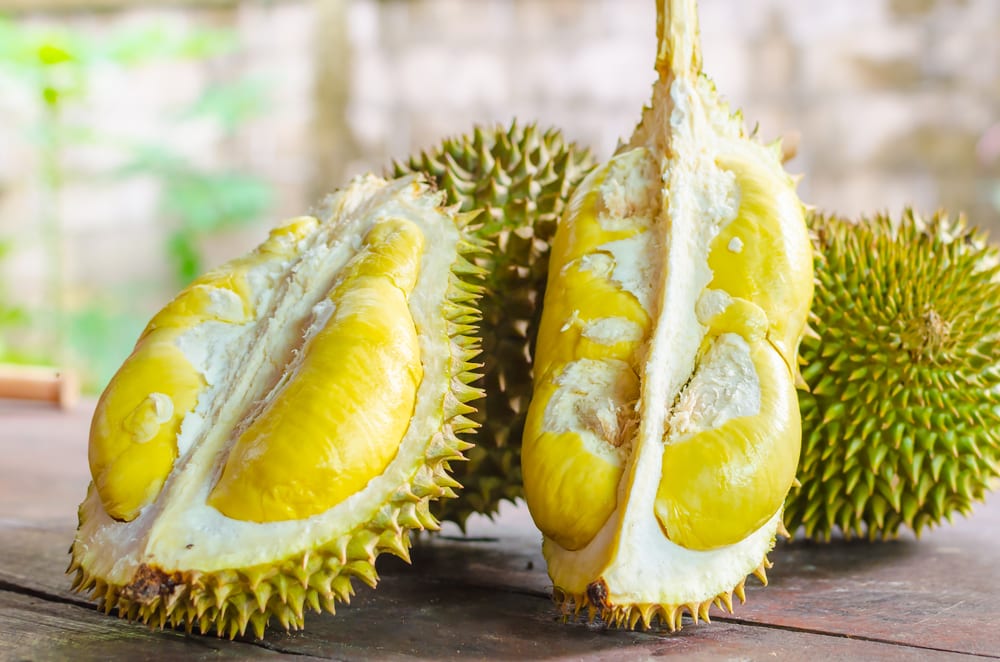
Simply swearing off eating exotic fruit may not be sufficient to save you from their evil effects. In 2012, a Malaysian man was killed whilst a basket of durian fruit fell from the back of his bike, inflicting serious head injuries. Named in some regions as the ‘King of fruits’, the durian fruit’s thorn-covered shell can grow as large as 12 inches, typically weighing 2-7 pounds.
A Malaysian saying maintains that durian fruit has eyes, and can see where it is falling; signs around trees warn locals not to linger around orchards. However, there may be hope: owing to its particularly pungent odor, durian fruit has been banned on many types of public transport across Asia. In Singapore, signs ban it from hotels and taxis: although its aroma may not be as lethal as its ballistic capabilities, probably best to leave it be.
2 A Lovely Bunch of Coconuts
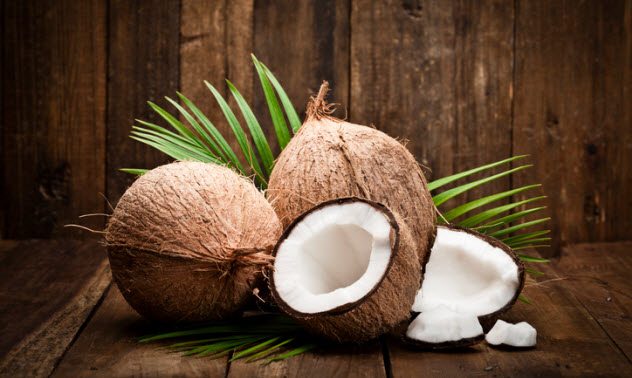
After all this doom and gloom, perhaps an escape to a tropical island (complete with pina colada) would be the perfect way to relax? Sun, sand, sea, and – sudden head trauma. In 1984, a Canadian doctor returning from Papua New Guinea and Angola estimated the annual death toll from falling coconuts to be around 150 people a year. Although his statistics were unfounded, deaths do undeniably occur in this way. In 2010, broadcasters reported the Indian government had ordered the removal of all coconuts from the Ghandi Museum in Mumbai, for fear of killing President Barack Obama in yet another fruit-focused presidential demise.
Even whilst cradling your coconut, you’re not quite out of the woods (or palm trees). In 1923, a Pennsylvanian man struggling to crack open a coconut decided to smash it open with his revolver butt: unfortunately, the revolver discharged, fatally shooting the man in the abdomen.
1 ‘Little Apple of Death’
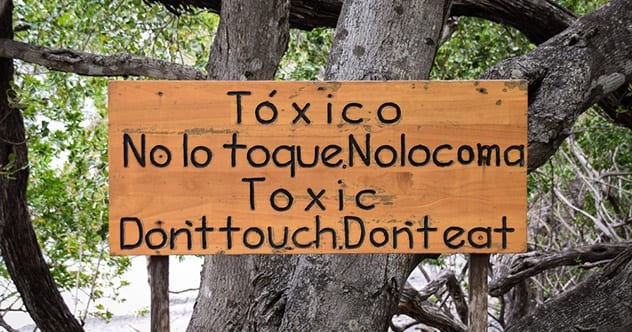
Finally, a fruit (and its tree) so deadly you’d be wise to steer clear of altogether. The ‘Machineel’ tree (‘manazilla de la muerte’ in Spanish, translating as ‘little apple of death’) is common along Caribbean shores and notoriously lethal. The tree itself produces a powerful irritant in its sap; touching the bark, or simply standing beneath the tree can cause injury, as can attempting to burn it. Although its bright green fruit resemble ripe apples, toxic effects include severe gastroenteritis, swelling of the airway and throat, and internal bleeding.
Shipwrecked sailors across the centuries have fallen fall of these ‘paradise apples’; Juan Ponce de Leon – famous European explorer or 1513 – is also purported to have died at the hands of the poisonous plant.
So in the closing words of Monty Python – ‘When you’re walking home tonight and some great homicidal maniac comes after you with a bunch of loganberries, don’t come crying to me!’
10 Fascinating Facts You Didn’t Know About Fruits
About The Author: Freelance aviation writer and builder of hot-air-balloons, when I’ve not got my head in the clouds I’m far more down-to-earth with pen and paper.








